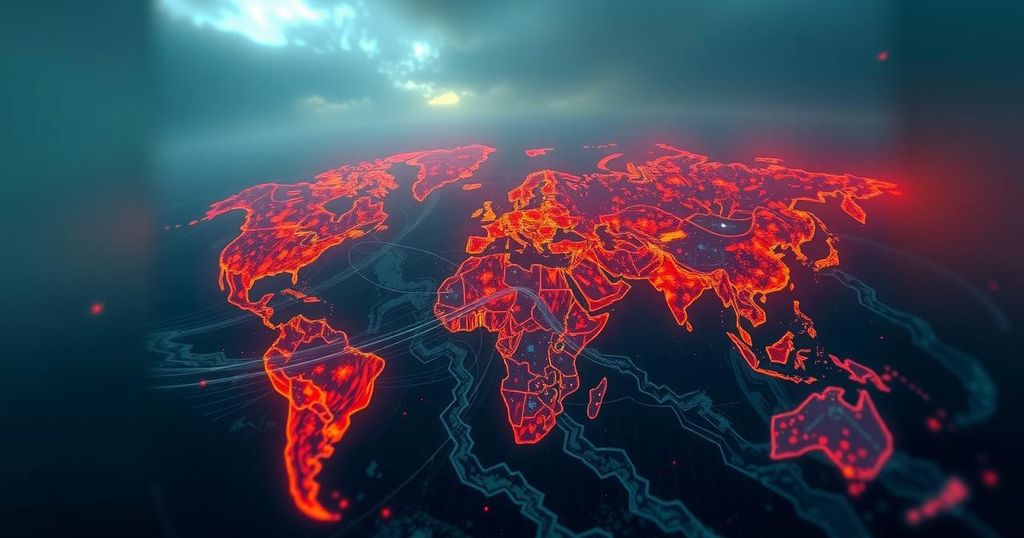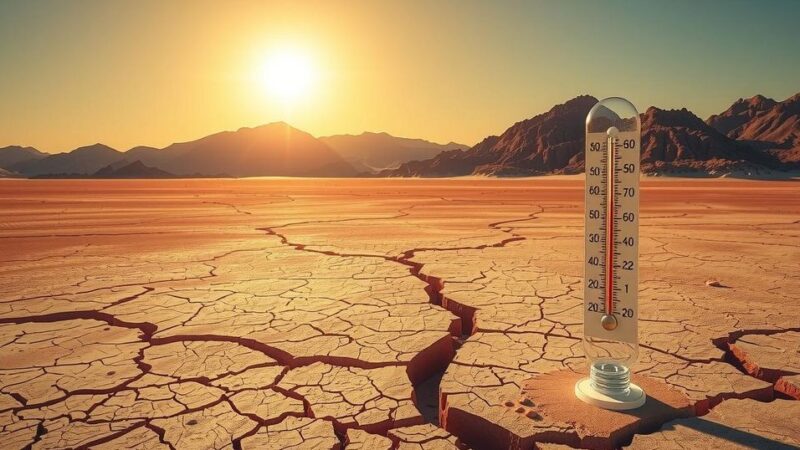In 2023, the Earth recorded unprecedented levels of greenhouse gases, with CO2 reaching 420 ppm, marking an escalation that locks in future temperature increases despite efforts for emission reductions. The WMO warned this trend, influenced by natural events and human activities, poses significant risks to global climate stability, necessitating urgent action ahead of the upcoming Cop29 climate summit.
In 2023, the Earth recorded alarming levels of greenhouse gases, reaching concentrations unprecedented in millions of years, according to the World Meteorological Organization (WMO). This report, released prior to the Cop29 climate summit in Azerbaijan, indicates that the current peak in greenhouse gas levels will lead to future temperature increases, regardless of any net-zero emission efforts. The concentration of carbon dioxide has soared to 420 parts per million (ppm), which parallels atmospheric conditions from three to five million years ago, a time when global temperatures were approximately 3°C higher and sea levels were as much as 20 meters elevated compared to today. WMO Secretary-General Celeste Saulo articulated the urgency of the situation, stating, “Another year. Another record. This should set alarm bells ringing among decision makers. We are clearly off track to meet the Paris Agreement goal of limiting global warming to well below 2°C.” The report highlighted that last year alone, atmospheric CO2 levels rose by 2.3 ppm, marking the twelfth consecutive year with similar increases and elevating overall levels to 151 percent above pre-industrial benchmarks. The analysis attributes the climb in CO2 levels to a combination of factors, including natural events such as El Nino, widespread wildfires, and ongoing fossil fuel combustion. Furthermore, the report captures a troubling trend where the efficiency of natural carbon sinks, notably forests and oceans, is declining, thereby exacerbating the greenhouse effect. Deputy Secretary-General Ko Barrett noted, “Climate change itself could cause ecosystems to become larger sources of greenhouse gases,” highlighting the risks of further wildfires and diminished oceanic CO2 absorption. The report revealed that global fire emissions in 2023 exceeded average levels by 16 percent, with notable wildfire outbreaks in Canada and an exceptionally dry period in Australia leading to severe bushfires. Methane concentrations reached 1,934 parts per billion, a staggering 265 percent above pre-industrial figures, while nitrous oxide had reached 336.9 parts per billion, up 125 percent. Persistent atmospheric CO2 levels show that nearly half of emissions remain in the atmosphere, with approximately one quarter being absorbed by oceans and nearly 30 percent by terrestrial ecosystems. However, climatic phenomena like El Nino and La Nina influence these absorption rates annually. Further analysis by the US National Oceanic and Atmospheric Administration indicated that greenhouse gases are now warming the planet 51.5 percent more than they were in 1990, with CO2 accounting for four-fifths of this increase. The long-lasting nature of CO2 emissions means that temperature rises will continue for decades, underscoring the necessity for immediate global action. Saulo asserted, “Every part per million and every fraction of a degree temperature increase has a real impact on our lives and our planet.” This report serves as an important resource ahead of the critical discussions at Cop29 in Baku.
The article focuses on the alarming rise in greenhouse gas concentrations in the Earth’s atmosphere, specifically carbon dioxide (CO2), as reported by the World Meteorological Organization (WMO). This rise has significant implications for global climate change, as it locks in future temperature increases even if emissions are curtailed. The findings underscore the urgency for action to mitigate climate change impacts, highlighting the influence of both natural and anthropogenic factors such as wildfires and fossil fuel emissions on greenhouse gas levels.
The alarming rise in greenhouse gas levels in 2023, particularly with CO2 concentrations reaching 420 ppm, signals a critical juncture for global climate action. Despite potential cuts to emissions, the warming effects of these gases are expected to persist for decades, threatening ecosystems and elevating the urgency for decisive measures to meet international climate agreements. As we approach the Cop29 climate summit, the findings emphasize the immediate need for collaborative and effective strategies to combat climate change.
Original Source: www.rfi.fr






